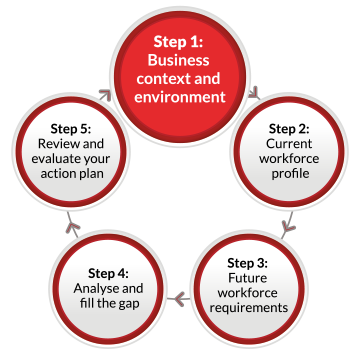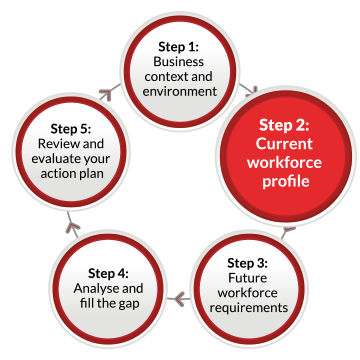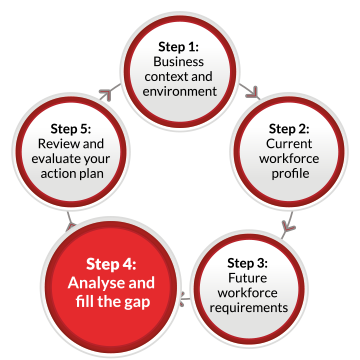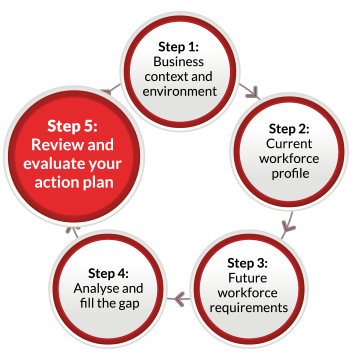Step 2 — Current workforce profile
What do you know about your current workforce?
For example, do you know the age, qualifications, skills, knowledge, experience, strengths, weaknesses, or any workforce issues of your staff? Perhaps your current staff have hidden potential that your business could use, or perhaps some staff may be underemployed and have the potential for training to up-skill them and transition them into new roles. Do you know what your employees’ plans are for the future, and know their expectations? Who do you expect may leave in the near or distant future?
You can gain a clear picture of your workforce’s strengths and development needs by doing a skills stocktake, analysing the patterns in your workforce data and discussing with your employees what their views are on issues, concerns or areas for improvement.
Refer to and complete the Current workforce profile and the Current workforce skills template. This simple exercise will give you a good base to work from when considering what your future workforce requirements may be and working out what might be missing.











